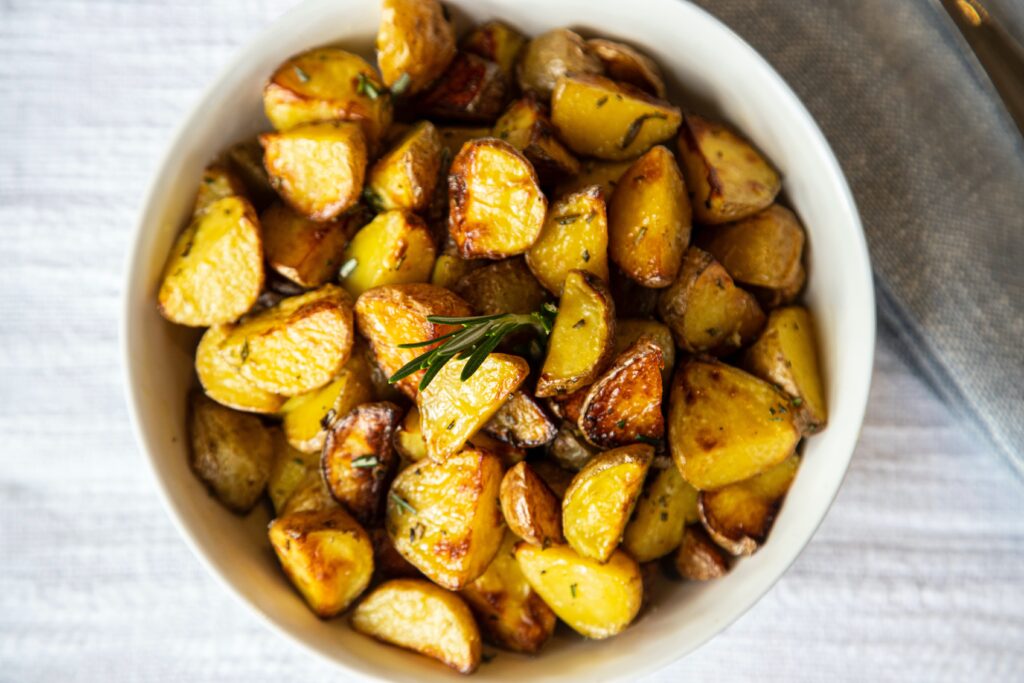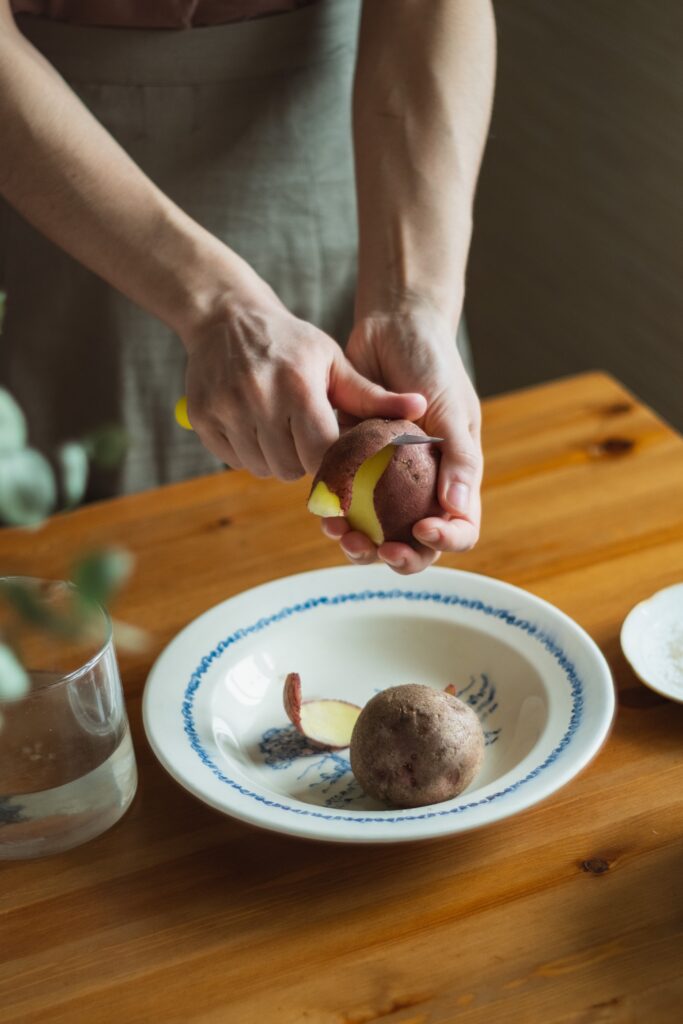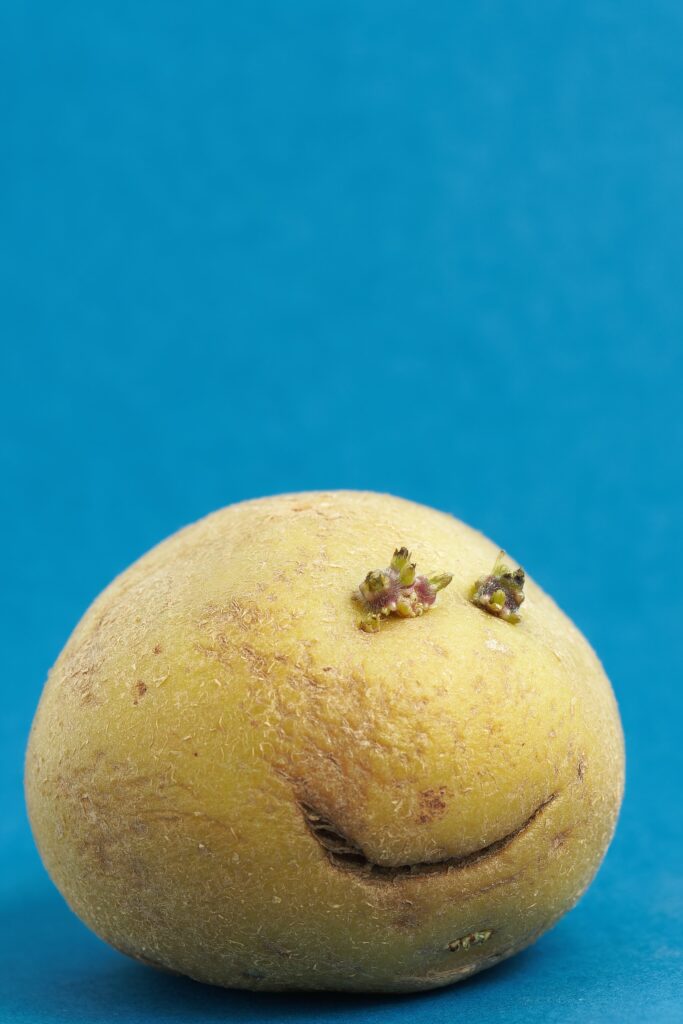
Roast potatoes are one of the homeliest side dishes in existence and for good reason. Most people who grew up with Sunday roasts feel they are synonymous with winter, home and family. If you were lucky enough to have this side dish at gatherings you should thank the cook, they might be a common sight but are quite difficult.
You have two texture aims with roast potatoes which make them bothersome. Ideally they should be crunchy on the outside and fluffy on the inside. So you must cook them long enough to form a crust on the outside but short enough not to dry out the inside.
That trait alone makes them a feat and we haven’t even spoken of taste yet. Though there are some tips that allow your potatoes to shine above the rest. Some are involved, some are simple, use whatever hacks you like to achieve potatoey greatness.
Duck fat
Made famous by the French but really we should thank the ducks. Putting duck fat into the mix when roasting potatoes is a triple threat. The combination is often thrown out there by food snobs without any obvious reasoning. Well here it is.
Firstly it adds a beautifully rich flavor that cannot be had from anything else. Second is that duck fat and potatoes go together like strawberries and cream. And thirdly, the right amount of duck fat makes potatoes more crunchy. Make sure you don’t put too much as it can cause them to soften.

Use the peels, even with peeled potatoes.
The peel is where a lot of that potato flavor comes from. This might anger those who like to peel their potatoes but we aren’t here to come to terms with the laws of physics and flavor, we are here to hack our way to deliciousness. Though if you want a more fool proof way of getting crispy potatoes then peel them.
If you peel your potatoes, keep those peels. Put them into some muslin and tie it off into a sack. Boil a pot of water large enough for your taters. Put the sack into the water as it boils. This is a way you can use the peels when you boil the spuds before you roast them, which is another hack we get to later on. By boiling the peels in the water first it’ll help put back some of that flavor into the potatoes that was lost.
Cut them correctly.
It might not seem obvious but this matters quite a lot. A potato’s crunch is defined by its surface area and what defines that is its shape and size. If you want some sort of crunchy surface you will have to cut them at least in half as the skins do not necessarily crisp up.
The size of the potato pieces defines your cooking time so try to make them as uniform as possible. Keep this in mind when picking your potatoes and cutting them.
The safest way to avoid issues is If you get medium sized potatoes and cut them into quarters. This means each piece will have a rounded side and two flat sides.
Sesame oil for flavor
If you do not like sesame, ignore this hack. If you do like sesame, welcome to the “being awesome” club. Cooking anything in sesame oil changes the flavor quite dramatically. This is awesome if you like it and horrible if you do not.
Tempura chefs in Japan most notably use this oil in varying ratios. Generally speaking the more upper market the higher the ratio of sesame oil in their mix of oils. This adds a richness to the temperature but it also costs more, no pun intended. We have found that Japanese sesame oils tend to be lighter in color and flavor and are best suited to this use. Try to get a light to medium color, it should look like apple juice at its darkest. If it’s a darker amber like maple syrup, avoid using it for this.
You should probably never use only sesame oil but definitely have it in the mix. If you haven’t tried it and are unsure, use a dash or two in a roast potato batch as an experiment and see how you go. It’s best to stay under a ratio of 40% of sesame oil in roast potatoes.
Hasselback is a good shortcut
These originated in Sweden but are found all over the world. Many people have had them for years not knowing their name but they are a designated recipe for roast potatoes.
They are great because they are kind of a short cut. If you don’t have enough time to boil and do all the other hacks that get the most out of roast potatoes then this is the one single hack for you.
Cut some smaller potatoes into half. Then make cuts along the rounded back of each piece. The better you get at this the better these potatoes will be. Essentially the little fans you are creating become all the crunchy goodness we expect from roast potatoes.
Boil them in salt water at your own risk.
This hack is huge. Chances are if you ate some great roast potatoes at a fancy restaurant then they were boiled first in salt water. This doesn’t just season your potatoes. It’s one of the biggest differences in creating the crust or not. If you want the best crust, do not skip this hack.
This enables the potato’s outer layer to dry out. This essentially is what develops a crust on anything. In this case it makes the outer parts of the vegetable become flakey and rough. This eventually will be the interesting texture that becomes the crust.
Rough them up in colander
It’s time to make full use of that boiled potato. You might have thought “Hey this is far enough. Are we really going this crazy for a potato”. You were wrong, we need to go further.
We want the ultimate crust on these spuds. How could we ever survive on soggy potatoes? As the 90s artist Seal sings “But we’re never gonna survive, unless we get a little crazy”
So let’s get a little crazy. Put the boiled potatoes into a cullender. Then shake them a little like tossing a salad. This will add even further craggles and cracks to form a crust. Don’t explode them, we are only getting a “little crazy”. We just need to break up that surface area.
Once they are boiled, Let them cool.
It is very counter intuitive, we know. However we are not here for the usual rules and directions, we are hacking our way into flavor country.
Place them on a tray and spread them out. Allow them to cool long enough but not before they start to discolor.
Doing this consolidates that crust we want. It allows the outer layer of the potato to dry out. That is what all that steam is. We all love a crunchy potato. If you do not then maybe you should rethink how you spend your time reading articles about crunchy potato creation.
Heat up your oil
Duck fat is solid most of the time so you will need to heat it up to make it a liquid. This makes it possible to coat the potatoes. However people noticed doing this made for crunchier potatoes. The heat is an effect in itself.
If you use duck fat, oil or a combination of both, heat it up before coating your cooled potatoes. It just needs to be warm enough to be too hot to touch but not smoking. This is mainly a safety net against the potatoes developing a soggy skin or not developing a crust. After this they will at least have some sort of crust.

Type of potato
The simplest breakdown of the potato family is two categories. The ones you use for mashing and the ones you use for roasting or chips. Try your best to get the roasting type. Some are said to be both but we have always found a bias towards one or the other.
Maris piper and arran victory potatoes are noted by heston blumental. Use whatever works locally, it does matter.
Fresh potatoes
Dry off after cook
Salt and seasoning
